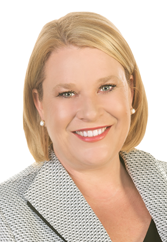
The Territory of Ashmore and Cartier Islands is an uninhabited Australian external territory consisting of four low-lying tropical islands in two separate reefs, as well as the 12-nautical-mile territorial sea generated by the islands. The territory is located in the Indian Ocean situated on the edge of the continental shelf, about 320 km (199 mi) off the northwest coast of Australia and 144 km (89 mi) south of the Indonesian island of Rote.

The Territory of Christmas Island is an Australian external territory in the Indian Ocean comprising the island of the same name. It is located approx. 350 kilometres south of Java and Sumatra and about 1,550 km (840 nmi) north-west of the closest point on the Australian mainland. It has an area of 135 square kilometres (52 sq mi).

The Cocos (Keeling) Islands, officially the Territory of Cocos (Keeling) Islands, are an Australian external territory in the Indian Ocean, comprising a small archipelago approximately midway between Australia and Sri Lanka and relatively close to the Indonesian island of Sumatra. The territory's dual name reflects that the islands have historically been known as either the Cocos Islands or the Keeling Islands.

There are 137 local government areas (LGAs) of Western Australia, which comprise 27 cities, 102 shires, and 8 towns that manage their own affairs to the extent permitted by the Local Government Act 1995. The Local Government Act 1995 also makes provision for regional local governments (referred to as "regional councils", established by two or more local governments for a particular purpose.

Jonathan Donald Stanhope is a former Australian politician who was Labor Chief Minister of the Australian Capital Territory from 2001 to 2011. Stanhope represented the Ginninderra electorate in the ACT Legislative Assembly from 1998 until 2011. He is the only ACT Chief Minister to have governed with a majority in the ACT Assembly. From 2012 to 2014 Stanhope was Administrator of the Australian Indian Ocean Territories, which consists of Christmas Island and Cocos (Keeling) Islands.

Barry Wayne Haase is a former Australian politician who served as a Liberal member of the Australian House of Representatives from October 1998 to August 2013. He initially represented the Western Australian Division of Kalgoorlie, the largest parliamentary constituency by area in the world. In 2010, Kalgoorlie was abolished, and Haase transferred to the newly created Division of Durack, essentially the northern half of his old electorate.
The title Administrator of the government (Administrator) has several uses in Australia.
The parliaments of the Australian states and territories are legislative bodies within the federal framework of the Commonwealth of Australia.
Local government is the third-level of government in Australia, administered with limited autonomy under the states and territories, and in turn beneath the federal government. Local government is not mentioned in the Constitution of Australia, and two referendums in 1974 and 1988 to alter the Constitution relating to local government were unsuccessful. Every state/territory government recognises local government in its own respective constitution. Unlike the two-tier local government system in Canada or the United States, there is only one tier of local government in each Australian state/territory, with no distinction between counties and cities.

The Australian Indian Ocean Territories is the name since 1995 of an administrative unit under the Australian Department of Infrastructure, Transport, Regional Development, Communications and the Arts, consisting of two island groups in the Indian Ocean under Australian sovereignty:

The states and territories are the second level of government of Australia. The states are administrative divisions that are self-governing polities that are partly sovereign, having ceded some sovereign rights to the federal government. They have their own constitutions, legislatures, executive governments, judiciaries and law enforcement agencies that administer and deliver public policies and programs. Territories can be autonomous and administer local policies and programs much like the states in practice, but are still legally subordinate to the federal government.

Christmas Island International Airport is an airport located on Christmas Island, a territory of Australia in the Indian Ocean. The island is located 2,600 km (1,600 mi) northwest of the Western Australian city of Perth, 500 km (310 mi) south of the Indonesian capital, Jakarta, and 975 km (606 mi) east-northeast of the Cocos (Keeling) Islands.

The Shire of Christmas Island is a local government area encompassing the Australian external territory of Christmas Island. Under the Christmas Island Act, Western Australian laws apply to the island, including the Local Government Act 1995.

The following outline is provided as an overview of and topical guide to Christmas Island:
The Supreme Court of the Cocos (Keeling) Islands is the de jure superior court for the Cocos (Keeling) Islands, an Australian external territory. The court was originally established in 1958 after the British Government transferred sovereignty for the islands from Singapore to Australia. The court had jurisdiction to deal with all serious crimes and major civil claims for damages occurring on the Island.

Natasha Louise Griggs is an Australian former politician and the administrator of the Australian Indian Ocean Territories from 2017 to 2022.
A status referendum was held in the Cocos (Keeling) Islands on 6 April 1984. All registered voters participated in the vote, with 88% voting for integration with Australia. The referendum has been described as the "smallest act of self-determination ever conducted".
The Direction Island Slipway and Tank are heritage-listed industrial remnants at Direction Island, Cocos (Keeling) Islands, Australia. The site was added to the Australian Commonwealth Heritage List on 22 June 2004.
Farzian Zainal is a politician from Christmas Island who is a councillor for the Shire of Christmas Island and the treasurer of the Indian Ocean Territories Regional Development Organisation. In June 2023, she was appointed as administrator of Christmas Island and the Cocos (Keeling) Islands.

The COVID-19 pandemic in the Cocos (Keeling) Islands is part of the ongoing worldwide pandemic of coronavirus disease 2019 (COVID-19) caused by severe acute respiratory syndrome coronavirus 2 (SARS-CoV-2). The virus was confirmed to have reached the Cocos (Keeling) Islands on 19 March 2022.















